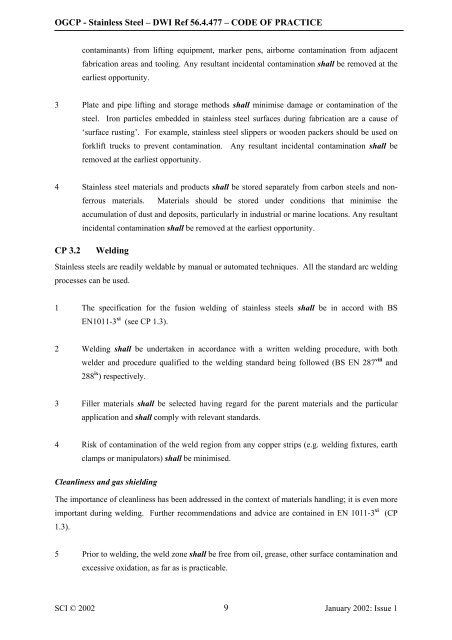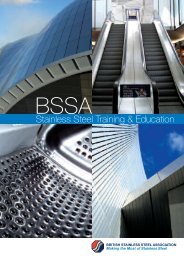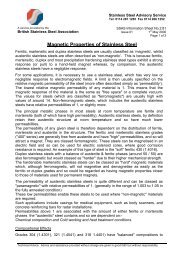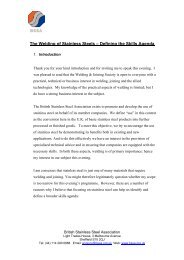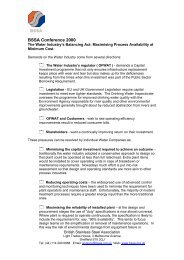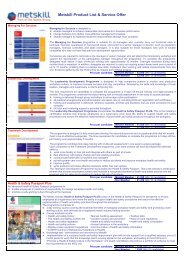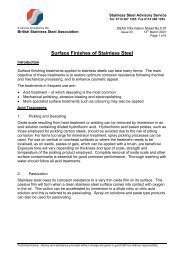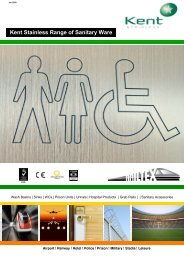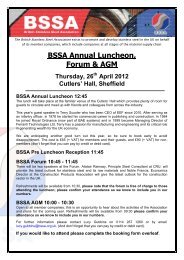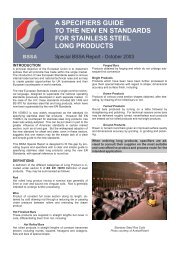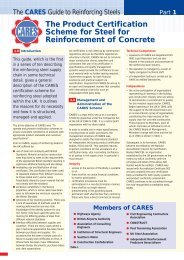Operational guidelines and code of practice for stainless steel
Operational guidelines and code of practice for stainless steel
Operational guidelines and code of practice for stainless steel
Create successful ePaper yourself
Turn your PDF publications into a flip-book with our unique Google optimized e-Paper software.
OGCP - Stainless Steel – DWI Ref 56.4.477 – CODE OF PRACTICE<br />
contaminants) from lifting equipment, marker pens, airborne contamination from adjacent<br />
fabrication areas <strong>and</strong> tooling. Any resultant incidental contamination shall be removed at the<br />
earliest opportunity.<br />
3 Plate <strong>and</strong> pipe lifting <strong>and</strong> storage methods shall minimise damage or contamination <strong>of</strong> the<br />
<strong>steel</strong>. Iron particles embedded in <strong>stainless</strong> <strong>steel</strong> surfaces during fabrication are a cause <strong>of</strong><br />
‘surface rusting’. For example, <strong>stainless</strong> <strong>steel</strong> slippers or wooden packers should be used on<br />
<strong>for</strong>klift trucks to prevent contamination. Any resultant incidental contamination shall be<br />
removed at the earliest opportunity.<br />
4 Stainless <strong>steel</strong> materials <strong>and</strong> products shall be stored separately from carbon <strong>steel</strong>s <strong>and</strong> nonferrous<br />
materials. Materials should be stored under conditions that minimise the<br />
accumulation <strong>of</strong> dust <strong>and</strong> deposits, particularly in industrial or marine locations. Any resultant<br />
incidental contamination shall be removed at the earliest opportunity.<br />
CP 3.2 Welding<br />
Stainless <strong>steel</strong>s are readily weldable by manual or automated techniques. All the st<strong>and</strong>ard arc welding<br />
processes can be used.<br />
1 The specification <strong>for</strong> the fusion welding <strong>of</strong> <strong>stainless</strong> <strong>steel</strong>s shall be in accord with BS<br />
EN1011-3 xi (see CP 1.3).<br />
2 Welding shall be undertaken in accordance with a written welding procedure, with both<br />
welder <strong>and</strong> procedure qualified to the welding st<strong>and</strong>ard being followed (BS EN 287 viii <strong>and</strong><br />
288 ix ) respectively.<br />
3 Filler materials shall be selected having regard <strong>for</strong> the parent materials <strong>and</strong> the particular<br />
application <strong>and</strong> shall comply with relevant st<strong>and</strong>ards.<br />
4 Risk <strong>of</strong> contamination <strong>of</strong> the weld region from any copper strips (e.g. welding fixtures, earth<br />
clamps or manipulators) shall be minimised.<br />
Cleanliness <strong>and</strong> gas shielding<br />
The importance <strong>of</strong> cleanliness has been addressed in the context <strong>of</strong> materials h<strong>and</strong>ling; it is even more<br />
important during welding. Further recommendations <strong>and</strong> advice are contained in EN 1011-3 xi (CP<br />
1.3).<br />
5 Prior to welding, the weld zone shall be free from oil, grease, other surface contamination <strong>and</strong><br />
excessive oxidation, as far as is practicable.<br />
SCI © 2002 9<br />
January 2002: Issue 1


